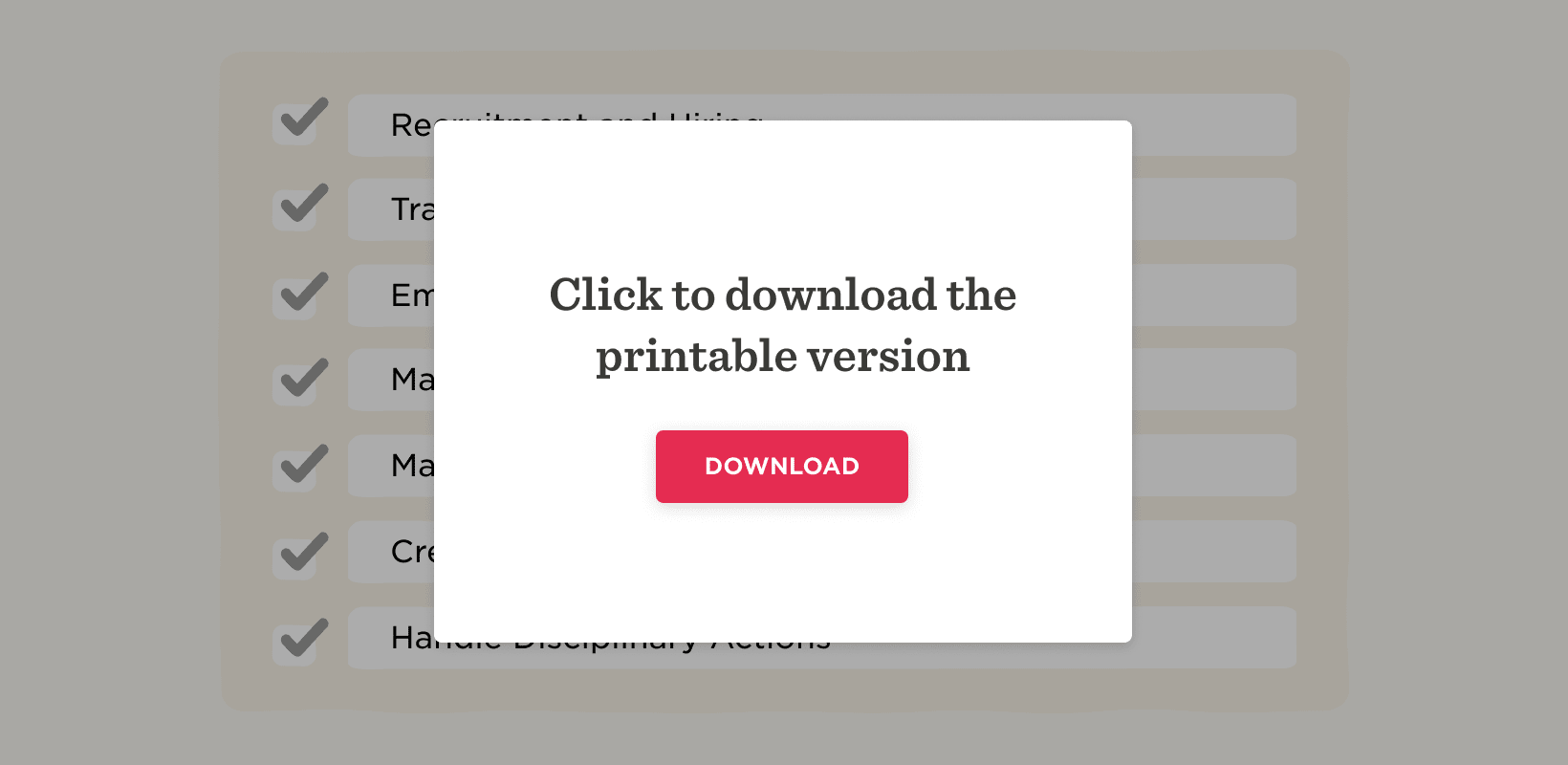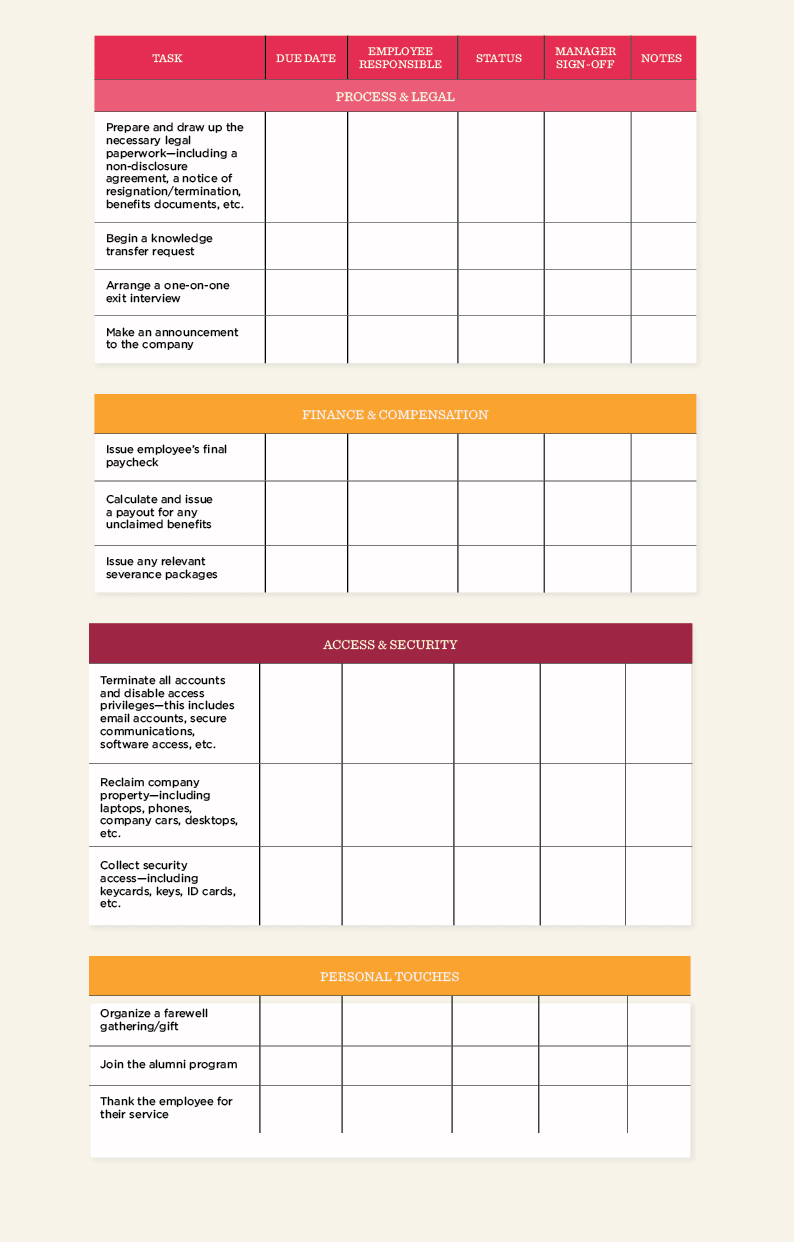All good things come to an end.
There will inevitably come a time in the course of business when an employer and employee part ways. Whether it’s a mutual shake of the hand and a wish of good luck or otherwise, it’s always best to say farewell in the best way possible.
Offboarding employees can be a tricky process. But instead of saying goodbye, we like to think that in most cases, it may be more pertinent to borrow the German phrase auf wiedersehen, as this can be loosely translated to “until we meet again”.
Keep this phrase in mind as it is important to remember that when people leave your company, they’re becoming alumni—meaning they will go on to represent your organization to others even after they’re no longer working for you. And don’t forget that it’s always possible that they’ll become “boomerang employees” who choose to leave but eventually come back.
No matter the circumstances or eventualities, offboarding is a vital process that should be treated with just as much care and respect as the onboarding process. With this in mind, we’ve created an offboarding checklist and an offboarding template so that you can streamline your processes and create the best possible offboarding experience for your outgoing employees.
<<Print this offboarding template and put a respectful and streamlined process in place.>>
Employee offboarding checklist for HR leaders
There are a number of key points that HR leaders need to consider when offboarding an employee. In our offboarding checklist, we’ll delve into all of the major points that should be covered.
It’s important to note that the circumstances surrounding an employee’s departure will dictate which of these points are relevant. But remember that your offboarding should always be as mindful, inclusive, and understanding as possible.
Communicate the departure
Communication within a company is vital. A number of repercussions come from an employee leaving the fold, and many of these will affect your other employees and the company as a whole.
If the departure is sudden, your remaining employees may have to pick up the slack until a replacement can be found, or if news leaks before you make an official announcement, rumors can start to spread.
For these reasons and many more, the departure should be communicated to the wider company as swiftly and professionally as possible. And as with most things, honesty is the best policy. Without revealing any sensitive information, tell your employees that the person in question is leaving and that you’ll be sure to communicate any more details once you have them.
You should also be sure to inform all relevant departments, such as your finance and IT departments, that the employee will need to be taken off the payroll and have their accounts and access privileges terminated/revoked.
Secure the knowledge
When an employee leaves a company, you don’t want them to take all of their know-how and expertise with them. Whether you’re hiring a replacement or not, you’ll want to ensure that you’re keeping the employee’s knowledge inside the workplace.
It’s always a smart idea to ask your departing employees to create a handover document, video, or checklist that contains the ins and outs of their daily work routine and any useful tips and tricks that go along with it.
Doing this will help ease the transition of losing a valued team member and make sure that their replacement will be able to hit the ground running with all the relevant information they need.
A handover document should be a detailed yet simple offering full of vital information with no jargon. Here is a basic outline of what knowledge you should be gathering from your departing employees:
- The daily routine of the employee
- Their day-to-day tasks and responsibilities
- An easy-to-understand guide on how to use relevant software
- Login passwords and usernames
- Information on the key processes and systems they use
- A list of key contacts—including clients, colleagues, etc.
- A detailed description of any ongoing projects
- Any general housekeeping information
Prepare the paperwork
Similar to the onboarding process, the offboarding process requires a fair amount of paperwork. Everything from a proper dated letter of resignation or termination, all the way to non-disclosure agreements and benefits documents.
It’s imperative that everything is accounted for and documented for legal purposes. This way, if any legal issues occur, you have a clear paper trail that documents how everything was done by the book—protecting both you as the company and the employee that has moved on.
Understand the reason
Understanding is a two-way street. When you’ve decided to let an employee go or an employee has decided to leave their post, then an honest line of communication should be built. This is normally done in the form of an exit interview.
Exit interviews are often seen as a pointless formality—a box to be ticked.
But as with any official employee communication, it’s all about how you handle it. When approached in the right way, an exit interview can give you a wealth of information on some key issues—mainly ways in which you can improve your employee experience and retention.
What it all boils down to is treating your employees with respect, compassion, and listening to what they have to say. Here are some key tips on how to conduct a successful exit interview:
Listen
It sounds simple, and that’s because it is. Taking the time to listen to your employees goes a long way in understanding the intention behind their actions. Even if an employee is leaving your company with nothing but good memories, there is still a lot you can learn from them about their time in the company.
Treat them with respect
Just because an employee is leaving the company does not mean their points are no longer valid. You should take all feedback seriously and relay any important information to the relevant departments. How you treat an employee during an exit interview will play a big part in how they remember you and your company. So make sure they remember you as caring, respectful, and compassionate.
Ask questions
An exiting employee is potentially full of valuable information—it’s just about how you can extract it from them. A big part of this is asking the right questions. Here are some that you may find useful:
- How do you think the employee experience can be improved?
- What are we not doing that we should be doing?
- Is there anything that we could have done differently?
- Is there anything that would have made you stay with us?
- Did your job live up to your expectations?
- Would you recommend the company as a good place to work?
- How was your relationship with your manager?
- How was your relationship with your peers?
Appreciate the employee
Any employee that has worked for your company has put their time and energy into making their role a successful one—and this is something that should be appreciated and congratulated.
A big section of the offboarding process involves tedious administrative tasks, as well as some potentially uncomfortable questions. Once that part is over, make sure to appreciate the good times as you wish them well on their onward journey.
You want to ensure that any employee who has dedicated their time to you leaves on the best possible note. Whether that’s by throwing a party or buying a thoughtful thank-you gift, make sure that the departing employee knows that you appreciate their time with you.
We all know how important first impressions are, but final impressions are also key and will shape how the employee speaks about your company for many months. Showing appreciation can come in many forms, from a card signed by colleagues to a party for the entire company (if this person is a founding member). Take a moment to think of the best way to pay tribute while considering the timing and the circumstances around each employee.
Look to the future
One of the many reasons that your offboarding process is so vital is you want to leave a good final impression in the event of your employees one day returning to work for you. After all, sometimes people just want to experience what else is out there before returning to a company they enjoyed working for.
And with companies all around the world dealing with the effects of a prominent skill gap, any avenue should be explored.
As we mentioned earlier, once an employee leaves your company, they become an alumnus. One way to keep track of your previous employees is by setting up an official alumni database and inviting your workers to join the network once they’ve left.
This way, you can keep up to date with the progress your ex-workers are making and potentially scout them for future job openings within the company.

Employee offboarding template for HR leaders
To help you make sure everything is ticked off on your checklist, we’ve created a free employee offboarding template that you can use as a baseline for your own procedures. With this template, you can either alter it to fit your needs or keep it as it is until you find your own unique way of handling the offboarding process.
<<Print this offboarding template and put a respectful and streamlined process in place.>>
Recommended For Further Reading
The bottom line
The offboarding process is an integral part of the employee experience.
Companies should focus on making sure offboarding is approached with the same care, attention, and compassion as any other process. You want your employees to remember you fondly—even those that have been let go rather than deciding to go.
As with any company process, your offboarding is deeply rooted in your company culture and the atmosphere that you cultivate within the company. If you treat people with compassion and respect, you can expect to receive it back.
Meet Bob
We know how important it is to provide managers and HR teams with what they need to make decisions about your people, especially in light of today’s modern workplace changes. That’s why we built Bob, an employee experience platform that provides valuable and personalized insights to grow your company’s relationships, productivity, and retention.
Bob harnesses the powerful combination of data and human factors to give HR professionals and managers access to the understanding they need to make better decisions. In a short time, Bob can be deployed to enable communication, collaboration, and connectivity that drives stronger engagement, productivity, and business outcomes.
For HR, it automates many common processes, allows greater oversight and visibility of the business, and centralizes all people data in a secure, user-friendly environment.
For managers, it provides access to data and insights to help them lead more effectively and streamline processes.
For employees, it’s the tools and information they need to connect, develop, and grow throughout their journey.

